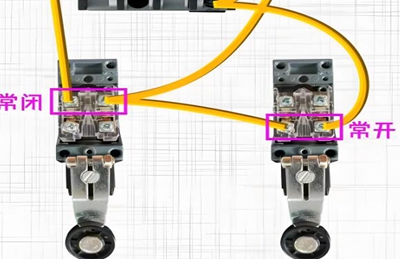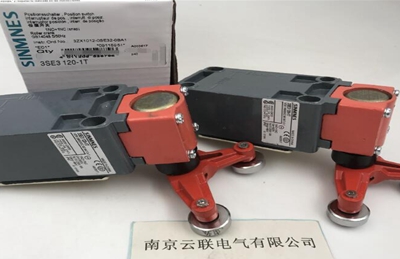
Telephone
025-52791167,52791168
13390905858
13390905858

Difference between Travel Switch and Limit Switch
In the field of industrial automation control, travel switches and limit switches are commonly used control components that play an important role in the control and safety protection of mechanical motion. However, despite their similarities in functionality, there are still some noticeable differences in practical applications.
1、 Definition and Working Principle
Travel switch
A travel switch, also known as a position switch, is a small current main control device that uses the collision of mechanical moving parts to make its contacts move to achieve circuit switching. Its working principle is that when the mechanical moving parts collide with the operating head of the travel switch, the internal contact system moves, thereby changing the on/off state of the circuit. For example, when the worktable of the machine tool moves to a specific position, touching the travel switch will stop the machine tool from moving or proceed to the next operation.
Limit switch
Limit switch is also an electrical component used to control mechanical motion. It mainly limits the range of motion of mechanical moving parts by detecting their positions, preventing them from exceeding the safe range and causing damage. Limit switches typically consist of an operating head, contact system, and housing. When the mechanical component reaches the set limit position, the operating head is subjected to external force, triggering the contact system to act, cutting off or changing the circuit state.
2、 Application scenarios
Travel switch
Travel switches are widely used in various mechanical equipment, such as machine tools, cranes, conveyors, etc. In machine tools, the travel switch can be used to control the travel of the worktable, the feed of the tool, etc; In cranes, travel switches can be used to limit the lifting height and operating range; On the conveyor, the travel switch can be used to detect the position of the material and achieve automatic control.
For example, on an automated production line, when the workpiece reaches a specific position, the travel switch is triggered to start the equipment for the next process, thereby achieving automated control of the production line.
Limit switch
Limit switches are mainly used in situations where precise control of mechanical motion range is required, such as lifting height limits for cranes, travel limits for crane carts and trolleys, and upper and lower limits for elevators. Limit switches can ensure that mechanical equipment operates within a safe range, avoiding accidents such as collisions and overloads.
For example, in an elevator, a limit switch can detect the position of the elevator car. When the car reaches the top or bottom floor, the limit switch is triggered, causing the elevator to stop running and preventing the car from rushing to the top or squatting to the bottom.
3、 Structural characteristics
Travel switch
The structure of a travel switch is relatively simple, usually consisting of an operating head, a contact system, a housing, and a reset spring. The shape and size of the operating head can be designed according to different application requirements to accommodate different mechanical moving parts. The contact system generally adopts micro switches or contact switches, which have the characteristics of sensitive action and high reliability.
Limit switch
The structure of limit switches is relatively complex, usually including operating heads, contact systems, transmission mechanisms, casings, and protective devices. The operating head generally adopts forms such as rollers, swing rods, or plungers to better adapt to different mechanical motion modes. Contact systems typically use high-capacity contact switches that can withstand large currents and mechanical shocks. The transmission mechanism can transmit the displacement of mechanical moving parts to the contact system, ensuring accurate operation of the switch. Protective devices can protect limit switches from external environmental influences, improving their reliability and service life.
4、 Performance characteristics
Travel switch
The action stroke of the travel switch is relatively small, usually between a few millimeters and tens of millimeters. Its action speed is fast, response time is short, and it can meet the control requirements of high-speed mechanical motion. The contact capacity of the travel switch is relatively small, generally only able to withstand a few amperes of current, suitable for controlling low-power electrical equipment.
Limit switch
The action stroke of the limit switch is relatively large, generally ranging from tens of millimeters to hundreds of millimeters. Its movement speed is relatively slow and response time is long, making it suitable for precise control of mechanical motion range. The contact capacity of limit switches is relatively large and can generally withstand currents of several tens of amperes, making them suitable for controlling high-power electrical equipment.
关 
telephone:025-52791167,52791168
Fax:025-52791169
Phone :13390905858
mailbox:njxj888@163.com skype:yluedq
Address:Jiangning Shuanglong Avenue No.1222 Nanjing, Jiangsu. China P.O. 211100